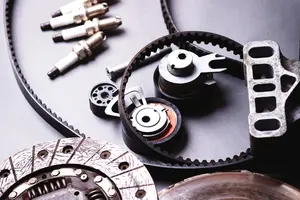
GREVEN INSIGHTS LUBRICANTS: Sealing Compatibility
In the past, sealing materials like elastomers were optimized for contact with mineral oils. Nowadays, synthetic esters are gaining importance and are being used more frequently. Since there are big differences between mineral and synthetic esters, the compatibility of the new base oils with sealing materials should be considered.
The fundamental difference between mineral oils or polyalphaolefins (PAO) and ester base oils lies in their chemical structure and polarity. Mineral oils and PAOs, as hydrocarbons, are non-polar and highly lipophilic substances. Esters, on the other hand, have a polar component with at least one ester group in the molecule. This difference in polarity significantly affects elastomer compatibility.
Even when considering only synthetic esters, various types of esters show significant differences in elastomer compatibility. These differences are mainly caused by variations in the structure and physical properties, as well as the chemical parameters of the esters.
Three factors can be considered to predict seal compatibility: polarity, viscosity and double bonds. Polar polymers are more likely to be attacked by the ester group than non-polar ones. Esters with higher viscosity demonstrate better compatibility due to their higher molar volume. Unsaturated esters, due to the presence of double bonds, lead to less swelling of elastomers.
Seal compatibility should also be considered when altering an existing lubricant formulation as changes in the base oil can have significant effects.
There are applications where moderate swelling of the seal is desired. This can prevent oil from leaking out of the system through controlled, slight swelling. Conversely, other applications require minimal swelling. With our wide product portfolio, we can offer suitable solutions for both requirements in various viscosity ranges:
LIGALUB 23 TMP (ISO VG 100): Low swelling on NBR1 (<5% mass gain)
LIGALUB L 105 (ISO VG 100): Moderate swelling on NBR1 (<10% mass gain)
LIGALUB L 103 D (ISO VG 320): Low swelling on NBR1 (<5% mass gain)
LIGALUB L 108 D (ISO VG 320): Moderate swelling on NBR1 (<10% mass gain)
If you are interested in a more detailed, technical paper please take a look at our Lube Tech article on sealing compatibility.
Our product manager Nadine Flügel is available to assist you with any questions related to sealing compatibility!


